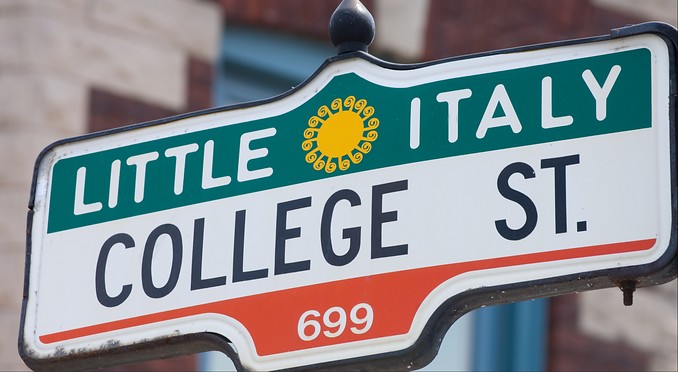Heritage Language: Italian
Introduction
Italian in the City of Toronto
Of the 1,161,690 speakers in Toronto whose mother tongue is a non-official
language, 195,000 consider Italian to be their
mother tongue, making it the second most common mother tongue language
spoken in the city. It is also the first official mother tongue language
spoken by over 85,000 people in Toronto. It goes without saying then, that
Italian is a huge part of Torontonian culture.
In total, Toronto has nearly 65,000 immigrants from Italy.
In the 2006 Census survey, over 180,600 people responded that they were
of Italian descent. Of those people, over 56,000 responded
that they were of multiple cultural backgrounds while 124,305 answered
that they were of a singly Italian background.
While there haven't yet been many statistics on people who read and write
in Italian, it was ranked as the third-highest heritage language used most
commonly at home in Toronto with approximately 44,445 speakers or 1.9% of
Toronto's population. In the workplace, 2,365
Torontonians identified Italian as a language used regularly at work, and
of that group, 855 identified it as the language which was most often used
at work. Overall, surveys revealed that there are approximately 118,330
total Italian speakers in Toronto.
Regions of Toronto
A few areas of Toronto specifically cater to Italian-Canadians with a selection of
authentic Italian restaurants and stores. Corso Italia "[features] the best in
owner-operated retail stores who import the latest in European fashion, bridal wear,
house wares and fine food products that you can’t buy anywhere else" (Corso Italia [CI], 2011).
Boasting being "the home to authentic Italian culture and heritage in Toronto" (CI, 2011)
Corso Italia is a Toronto neighbourhood that is proud of it's Italian culture.
Another such region is Little Italy, whose streets are packed with trattorias, trendy
restaurants and cafés, and a booming nightlife.
With a variety of places to eat, people to meet, and an abundance of things to do,
Little Italy is certainly keeping up the Italian-Canadian cultural vitality. From the
many shops and cafés to the frequent neighbourhood held Italian events, LIttle Italy
makes it easy to find others in the Italian community who care about their Italian
roots. It was even recently "noted to be one of the trendiest and friendliest
neighbourhoods in North America" (Little Italy in Toronto, 2011).
 Map of Toronto neighbourhoods
Map of Toronto neighbourhoods
Authors: Nancy Correia, Kathleen Walsh, Tsenat Keleta, Laura Prange, Vanessa Zeoli
[Return to HLVC Home] [Return to Resources for Speakers]